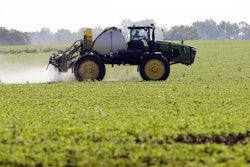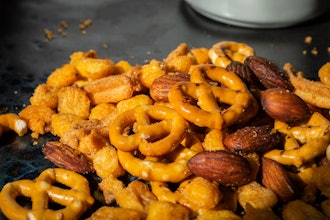LINCOLN, Neb. (AP) — Farmers in Nebraska and Iowa should prepare for drought conditions this summer that could devastate their crops, climatologists said Thursday.
The warnings echoed what ranchers and farmers reported from their fields this week — dry conditions unlike anything they've seen.
Nebraska State Climatologist Harry Al Dutcher said the state averages an inch of rain per week in June, but the soil is so dry that crops will need nearly double the typical rainfall throughout the month just to grow as normal. And that, Dutcher said, is unlikely.
Farmers who irrigate will also have to use more water, raising their costs and cutting into their profits. Dry-land farmers are at the mercy of Mother Nature and crop insurance.
"Unless we go through an exceptional three-week wet spell, we're going to be playing this game on and off all growing season," Dutcher said. "At this point, it's just a matter of what is the degree of crop damage going to be? I hate to be so negative, but how can you not be at this point?"
Western Nebraska is experiencing the most extreme dry conditions and is already in a moderate drought. Though a thunderstorm rumbled through western Nebraska's Panhandle on Wednesday night and added another inch, Dutcher and local ranchers said the total rainfall is still short for the year.
Jeff Metz, who tends 2,500 acres of wheat fields and ranch land in rural Morrill County, said ranches in his area are still in "serious, serious condition" even with the rainfall.
The 47-year-old lifelong rancher said planting conditions for his wheat are the worst he can remember. Rainfall since January has totaled about 3 inches — 4 inches shy of the average. Metz said his ranch typically sees 15 inches of rain annually.
"It's not all peaches and cream out here in the countryside," Metz said. "There are people struggling. I don't think a lot of people realize how tough things have been this year. We're not used to getting a lot of rain, but we'd at least like to stay close to the average."
It's less dire in Iowa, but the next few weeks will prove critical for harvesting season.
As crop roots grow, they reach deeper into the ground for moister sub-soil. But they first have to grow through roughly 1 foot of topsoil that's now drier than normal, said Iowa State Climatologist Harry Hillaker.
He said conditions in May and early June often signal how the weather will act the rest of the year, and the dry, warm weather suggests that the drought will worsen. Long dry spells are likely to stay in place, which increases the amount of evaporation and requires more rain to maintain crops.
Hillaker said crop conditions in Iowa are still good, but "that could change really quickly" unless the weather turns cooler and wetter.
"I'd give pretty good odds right now that the month of June will average out warmer than normal," Hillaker said.
In north-central Iowa's Hardin County, veteran farmer Larry Sailer said he expects the heat will take a large bite out of his corn and soybean yield this year.
"I've been farming in the same spot for 40 years, and I've never seen it this dry this early," he said. "That may change. It can start again and stop. But right now, it's dry."
Bobbie Kriz-Wickham, assistant director of the Nebraska Department of Agriculture, said farmers will likely have to rely on crop insurance this year unless weather patterns change. She said ranchers should also store extra hay for cattle in the likelihood that grass growth is also stunted.
"Most of our producers are pretty savvy about having crop insurance," Kriz-Wickham said. "They consider all of the things that might happen, and are pretty good about making sure they have some level of protection."






















